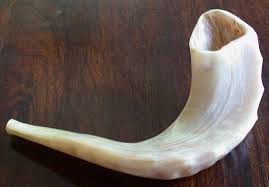Various objects
Various objects Jewish municipality in Novi Sad. We would like to thank Goran Levi.
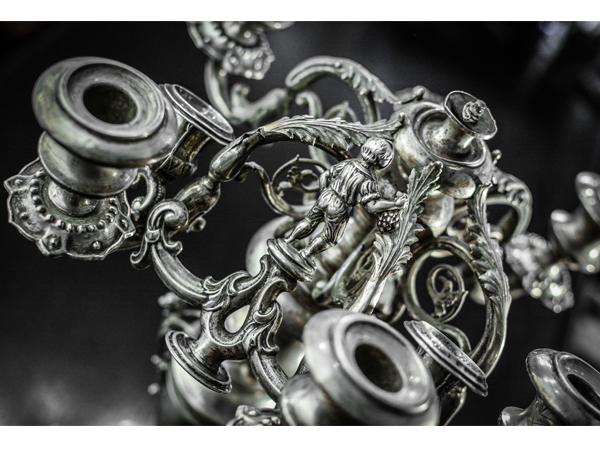

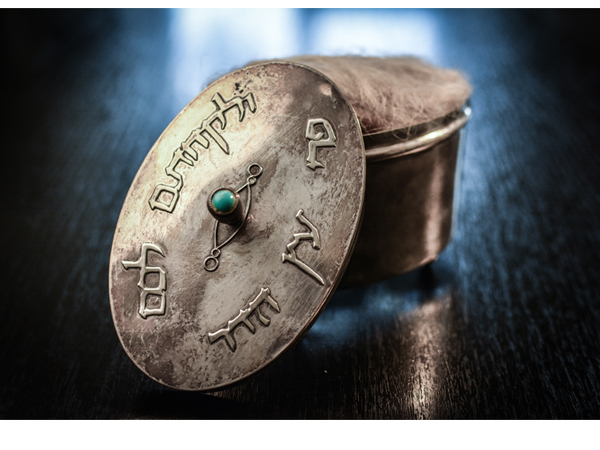
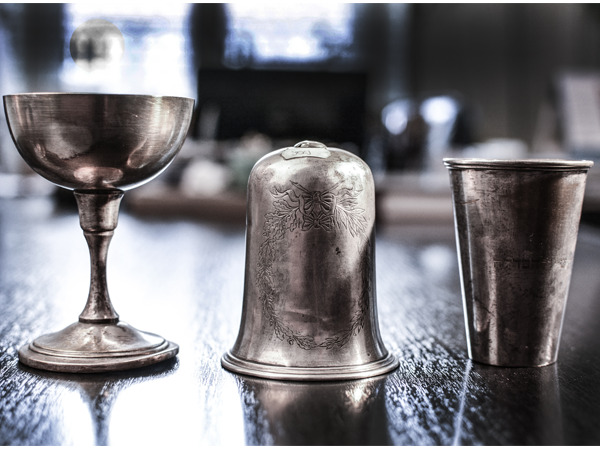
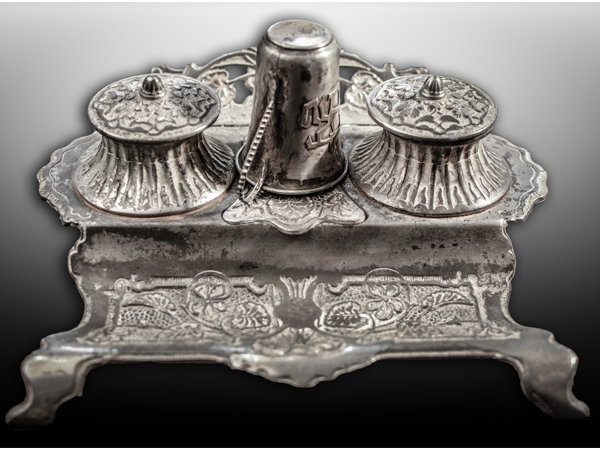

Judaism is the religion, philosophy, and way of life of the Jewish people. Judaism is a monotheistic religion, with the Torah as its foundational text (part of the larger text known as the Tanakh or Hebrew Bible), and supplemental oral tradition represented by later texts such as the Midrash and the Talmud. Judaism is considered by religious Jews to be the expression of the covenantal relationship that God established with the Children of Israel.
Judaism includes a wide corpus of texts, practices, theological positions, and forms of organization. Within Judaism there are a variety of movements, most of which emerged from Rabbinic Judaism, which holds that God revealed his laws and commandments to Moses on Mount Sinai in the form of both the Written and Oral Torah. Historically, this assertion was challenged by various groups such as the Sadducees and Hellenistic Judaism during the Second Temple period; the Karaites and Sabbateans during the early and later medieval period; and among segments of the modern reform movements. Liberal movements in modern times such as Humanistic Judaism may be nontheistic. Today, the largest Jewish religious movements are Orthodox Judaism (Haredi Judaism and Modern Orthodox Judaism), Conservative Judaism and Reform Judaism. Major sources of difference between these groups are their approaches to Jewish law, the authority of the Rabbinic tradition, and the significance of the State of Israel. Orthodox Judaism maintains that the Torah and Jewish law are divine in origin, eternal and unalterable, and that they should be strictly followed. Conservative and Reform Judaism are more liberal, with Conservative Judaism generally promoting a more "traditional" interpretation of Judaism's requirements than Reform Judaism. A typical Reform position is that Jewish law should be viewed as a set of general guidelines rather than as a set of restrictions and obligations whose observance is required of all Jews. Historically, special courts enforced Jewish law; today, these courts still exist but the practice of Judaism is mostly voluntary. Authority on theological and legal matters is not vested in any one person or organization, but in the sacred texts and rabbis and scholars who interpret them.
Judaism claims a historical continuity spanning more than 3,000 years. Judaism has its roots as a structured religion in the Middle East during the Bronze Age. Of the major world religions, Judaism is considered one of the oldest monotheistic religions. The Hebrews / Israelites were already referred to as "Jews" in later books of the Tanakh such as the Book of Esther, with the term Jews replacing the title "Children of Israel". Judaism's texts, traditions and values strongly influenced later Abrahamic religions, including Christianity, Islam and the Baha'i Faith. Many aspects of Judaism have also directly or indirectly influenced secular Western ethics and civil law.
Various objects Jewish municipality in Novi Sad. We would like to thank Goran Levi.





Torah, or what is often referred to in English as Pentateuch, is the central concept in the religious Judaic tradition.
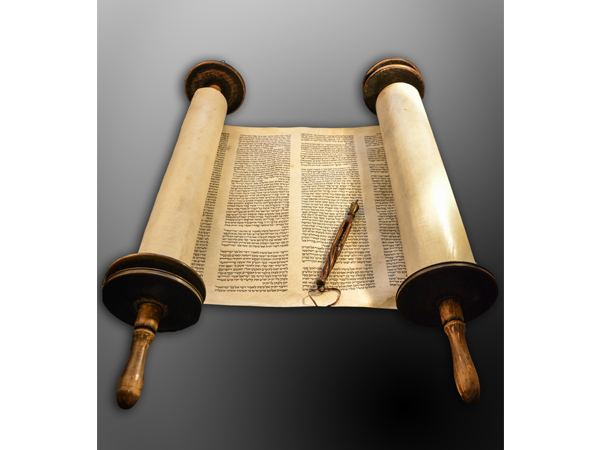
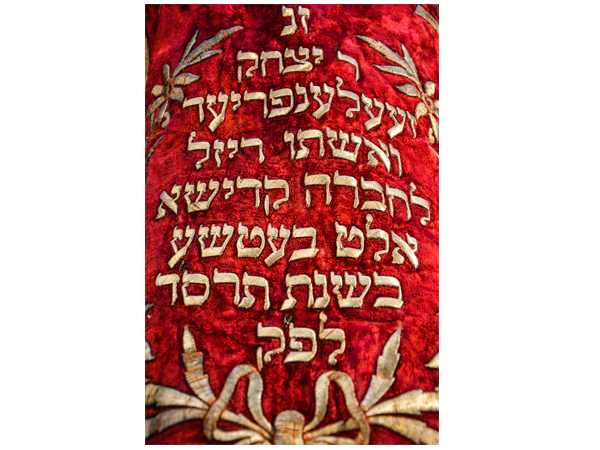
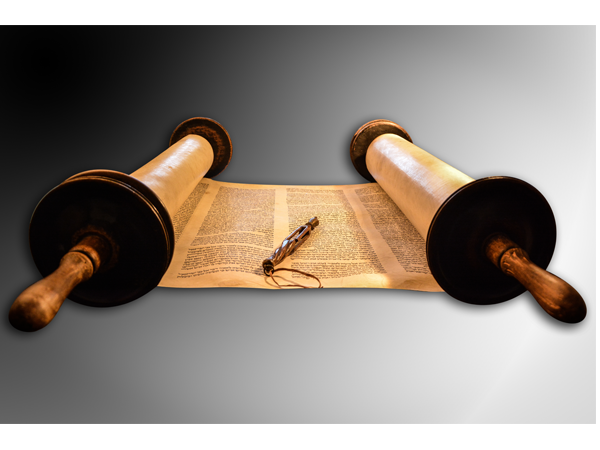
The Menorah is described in the Bible as the seven-lamp (six branches) ancient Hebrew lampstand made of pure gold and used in the portable sanctuary set up by Moses in the wilderness and later in the Temple in Jerusalem.
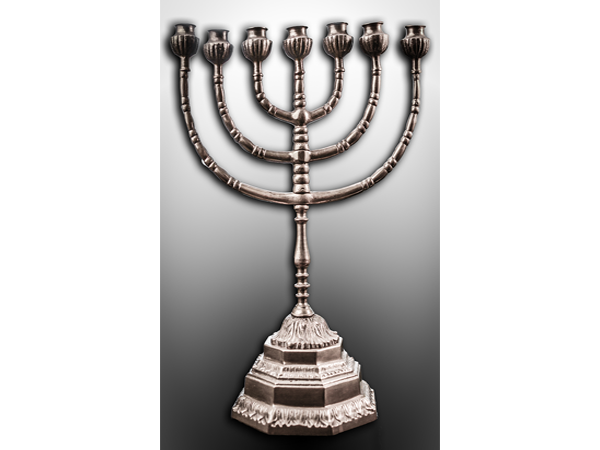
Jewish candlestick with 9 candles.
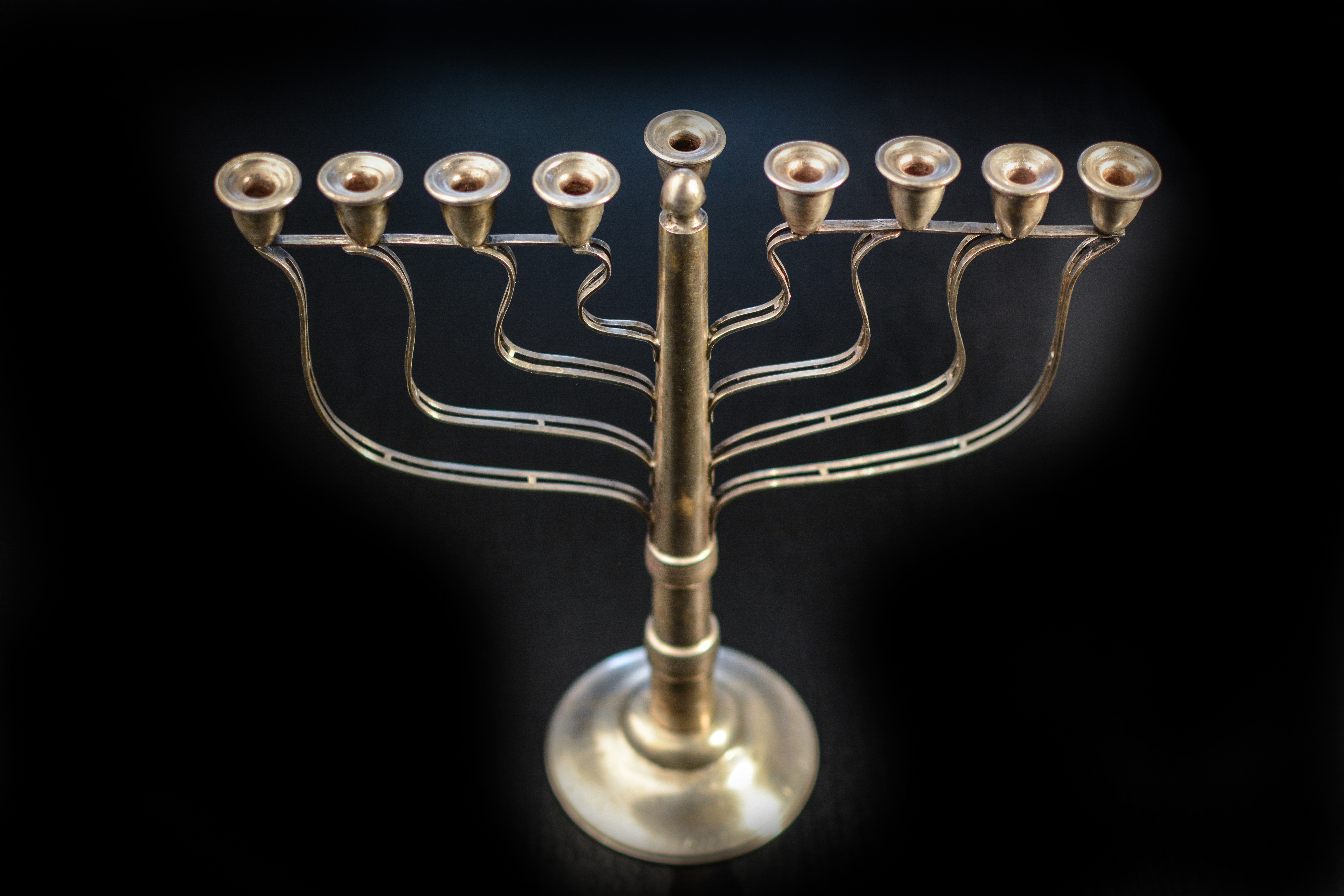
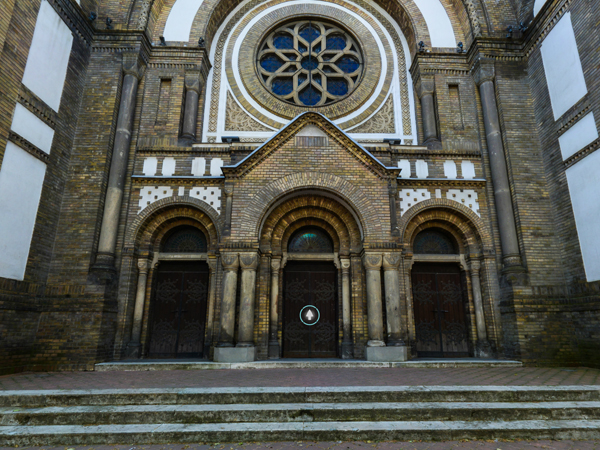
Purim (Hebrew: פּוּרִים (help·info) Pûrîm "lots", from the word pur, related to Akkadian pūru) is a Jewish holiday that commemorates the deliverance of the Jewish people in the ancient Persian Empire forming a plot to destroy them. The story is recorded in the Biblical Book of Esther (Megillat Esther). According to the Book of Esther, Haman, royal vizier to King Ahasuerus (presumed to be Xerxes I of Persia), planned to kill all the Jews in the empire, but his plans were foiled by Mordecai and his adopted daughter Queen Esther. The day of deliverance became a day of feasting and rejoicing. Purim is celebrated by giving reciprocal gifts of food and drink (mishloach manot), giving charity to the poor (mattanot la-evyonim), a celebratory meal (se'udat Purim), and public recitation of the Scroll of Esther (kriat ha-megillah), additions to the prayers and the grace after meals (al hannisim). Other customs include drinking wine, wearing of masks and costumes, and public celebration. Purim is celebrated annually according to the Hebrew calendar on the 14th day of the Hebrew month of Adar (Adar II in leap years), the day following the victory of the Jews over their enemies. In cities that were protected by a surrounding wall at the time of Joshua, Purim is instead celebrated on the 15th of the month on what is known as Shushan Purim, since fighting in the walled city of Shushan continued through the 14th. Today, only Jerusalem celebrates Purim on the 15th. Like Hanukkah, Purim has more of a national than a religious character, and its status as a holiday is on a lesser level than those days ordained holy by the Torah. Accordingly, business transactions and even manual labor are allowed on Purim. A special prayer ("Al ha-Nissim"—"For the Miracles") is inserted into the Amidah during evening, morning and afternoon prayers, as well as is included in the Birkat Hamazon ("Grace after Meals.") The four main mitzvot (obligations) of the day are: 1) Listening to the public reading, usually in synagogue, of the Book of Esther in the evening and again in the following morning (k'riat megillah) 2) Sending food gifts to friends (mishloach manot) 3) Giving charity to the poor (matanot la'evyonim) 4) Eating a festive meal (se`udah) Text:
Source:Wikipedia
Image:Harmonic
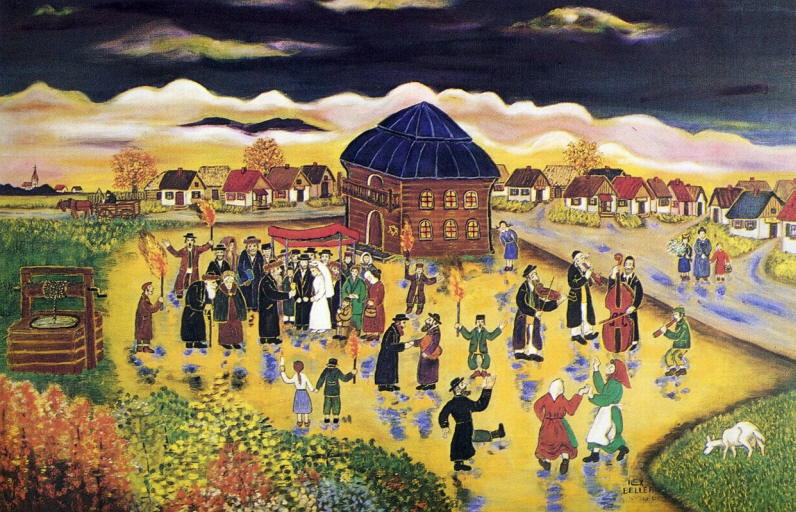
Judaism is the religion, philosophy, and way of life of the Jewish people. Judaism is a monotheistic religion, with the Torah as its foundational text (part of the larger text known as the Tanakh or Hebrew Bible), and supplemental oral tradition represented by later texts such as the Midrash and the Talmud. Judaism is considered by religious Jews to be the expression of the covenantal relationship that God established with the Children of Israel.
Judaism includes a wide corpus of texts, practices, theological positions, and forms of organization. Within Judaism there are a variety of movements, most of which emerged from Rabbinic Judaism, which holds that God revealed his laws and commandments to Moses on Mount Sinai in the form of both the Written and Oral Torah. Historically, this assertion was challenged by various groups such as the Sadducees and Hellenistic Judaism during the Second Temple period; the Karaites and Sabbateans during the early and later medieval period; and among segments of the modern reform movements. Liberal movements in modern times such as Humanistic Judaism may be nontheistic. Today, the largest Jewish religious movements are Orthodox Judaism (Haredi Judaism and Modern Orthodox Judaism), Conservative Judaism and Reform Judaism. Major sources of difference between these groups are their approaches to Jewish law, the authority of the Rabbinic tradition, and the significance of the State of Israel. Orthodox Judaism maintains that the Torah and Jewish law are divine in origin, eternal and unalterable, and that they should be strictly followed. Conservative and Reform Judaism are more liberal, with Conservative Judaism generally promoting a more "traditional" interpretation of Judaism's requirements than Reform Judaism. A typical Reform position is that Jewish law should be viewed as a set of general guidelines rather than as a set of restrictions and obligations whose observance is required of all Jews. Historically, special courts enforced Jewish law; today, these courts still exist but the practice of Judaism is mostly voluntary. Authority on theological and legal matters is not vested in any one person or organization, but in the sacred texts and rabbis and scholars who interpret them...
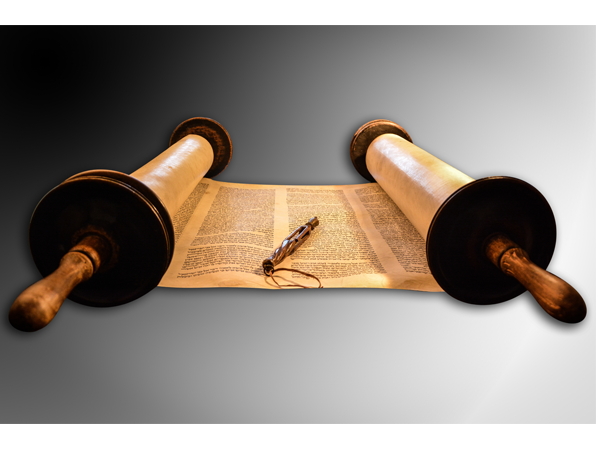
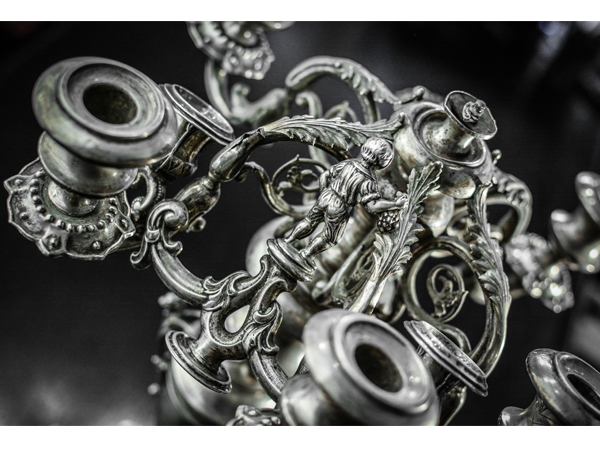
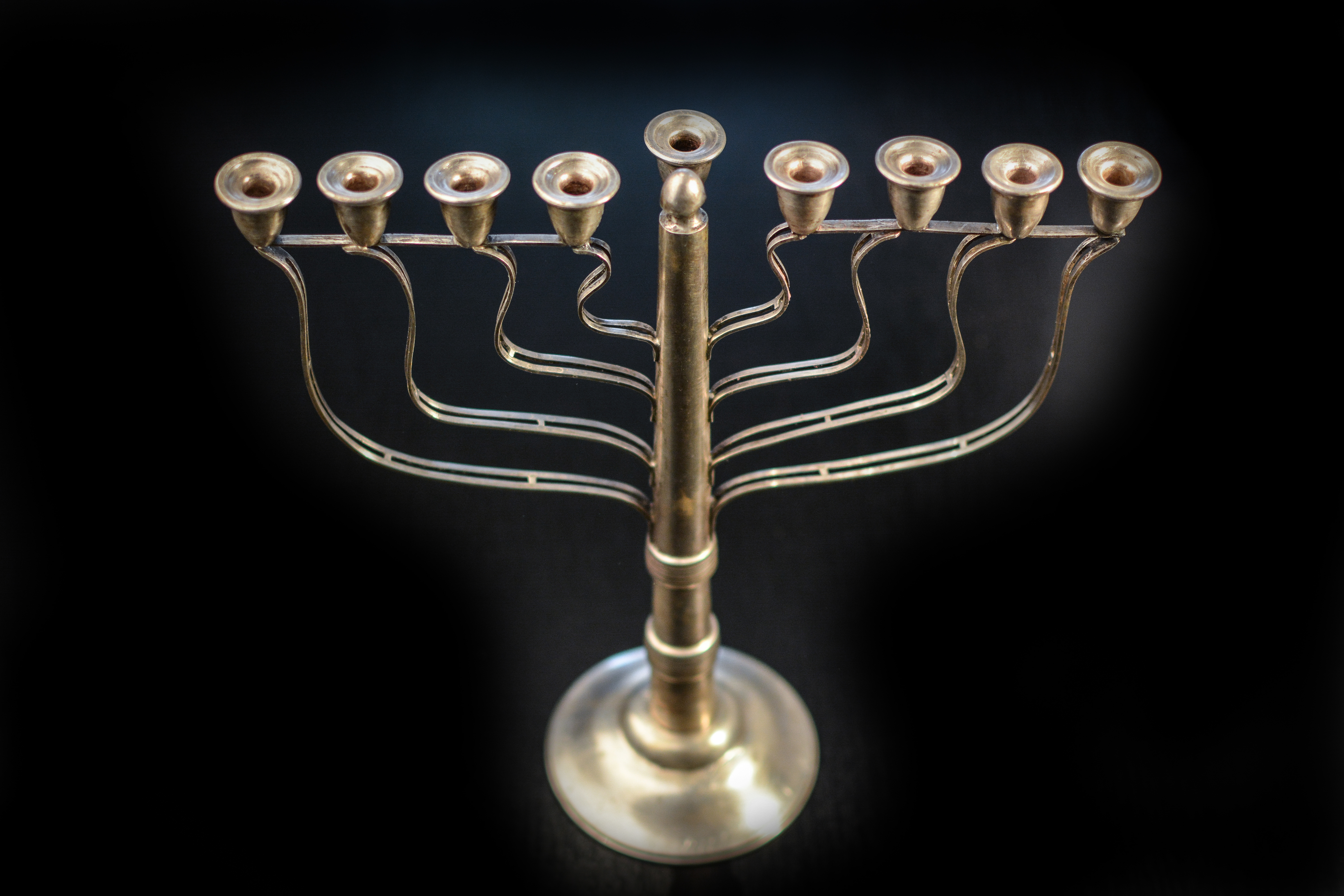
This Synaxis - which is to say, our coming together to glorify the Theotokos - is celebrated especially in her honour because she gave birth supernaturally to the Son and Word Of God, and thus became the instrument of the salvation of mankind. On the second day of the feast, the Synaxis of the Most Holy Theotokos is celebrated. Combining the hymns of the Nativity with those celebrating the Mother of God, the Church points to Mary as the one through whom the Incarnation was made possible. His humanity - concretely and historically - is the humanity He received from Mary. His body is, first of all, her body. His life is her life. This feast, the assembly in honor of the Theotokos, is probably the most ancient feast of Mary in the Christian tradition, the very beginning of her veneration by the Church. Six days of post-feast bring the Christmas season to a close on December 31. At the services of all these days, the Church repeats the hymns and songs glorifying Christ's Incarnation, reminding us that the source and foundation of our salvation is only to be found in the One who, as God before the ages, came into this world and for our sake was "born as a little Child."
Source: SPC
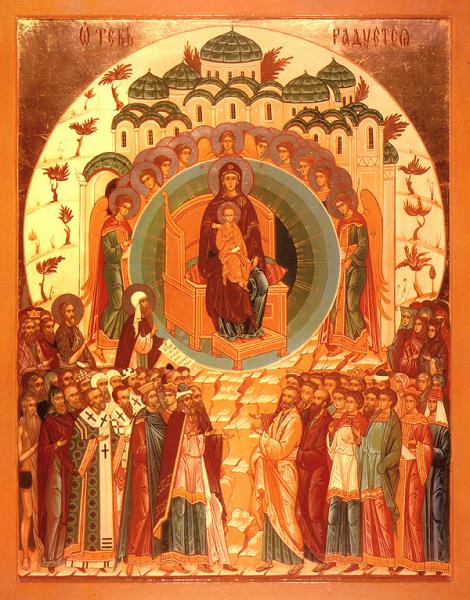
On this day are commemorated two events connected with the Precious Cross of Christ: the first, the finding of the Cross on Golgotha and the second the returning of the Cross to Jerusalem from Persia. Staying in the Holy Land, the holy Empress Helena decided to took for the Precious Cross of the Lord. An old Jew called Judah was the only person who knew the whereabouts of the Cross, and, under pressure from the Empress, he revealed that the Cross was buried under the Temple of Venus that the Emperor Hadrian had built on Golgotha. The Empress ordered that this idolatrous temple be pulled down, and then, digging deep below it, she found three crosses. While the Empress was in uncertainty about how to recognise which cross was the Lord's, a funeral procession passed by. Then Patriarch Macarius told them to place the crosses one by one on the dead man. When they placed the first and second on him, the dead man remained unchanged, but when they placed the third on him, he was restored to life. By this, they knew that this was the Precious and life-giving Cross of Christ. After that, they placed it on a sick woman, and she recovered. Then the Patriarch raised the Cross aloft for all to see, and the people sang with tears: 'Lord, have mercy!' The Empress Helena had a silver casing made, and placed the precious Cross in it. Later, King Chozroes conquered Jerusalem, took the people into slavery and carried the Lord's Cross off to Persia, where it remained for fourteen years. In 628, the Greek Emperor Heraclius was victorious over Chozroes and brought the Cross back to Jerusalem with great ceremony. Entering the city, Heraclius was carrying the Cross on his back, but suddenly the aged Emperor was unable to take another step. Patriarch Zacharias saw an angel directing the Emperor to take off his imperial robes and walk beneath the Cross along the way that Christ had walked, barefoot and humiliated as He had been. He passed this vision on to the Emperor, who stripped himself of his raiment and, in poor clothing and barefoot, took up the Cross, carried it to Golgotha and placed it in the Church of the Resurrection, to the joy and consolation of the whole Christian world.
Source: Holy Mountain
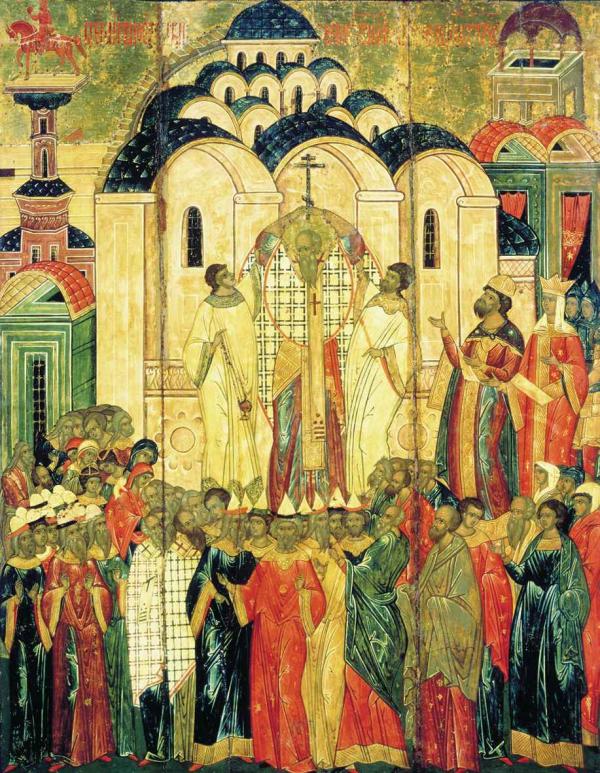
Rosh Hashanah , is the Jewish New Year although the real name for this Feast of the Lord is called Yom Teruah or the Feast of Trumpets according to the correct biblical calendar of the 1st and 2nd temple period, not Rosh Hashanah. It is the first of the High Holy Days or Yamim Nora'im ("Days of Awe") which usually occur in the early autumn of the Northern Hemisphere. Rosh Hashanah is a two-day celebration, which begins on the first day of Tishrei. The day is believed to be the anniversary of the creation of Adam and Eve, the first man and woman, and their first actions toward the realization of mankind's role in God's world. Rosh Hashanah customs include sounding the shofar (a hollowed-out ram's horn) and eating symbolic foods such as apples dipped in honey to evoke a "sweet new year". The common greeting on Rosh Hashanah is "Shanah Tovah", which, in Hebrew, means "[have a] good year" or similar greetings. Thus, in Yiddish the greeting is "ah gut yohr" ("a good year") or "ah gut gebentched yohr" ("a good blessed year"). The Mishnah contains the second known reference to Rosh Hashanah as the "day of judgment". In the Talmud tractate on Rosh Hashanah, it states that three books of account are opened on Rosh Hashanah, wherein the fate of the wicked, the righteous, and those of an intermediate class are recorded. The names of the righteous are immediately inscribed in the book of life, and they are sealed "to live." The intermediate class are allowed a respite of ten days, until Yom Kippur, to reflect, repent and become righteous; the wicked are "blotted out of the book of the living forever." In Jewish liturgy, Rosh Hashanah leads to Yom Kippur, which is described as "the day of judgment" (Yom ha-Din) and "the day of remembrance" (Yom ha-Zikkaron). Some midrashic descriptions depict God as sitting upon a throne, while books containing the deeds of all humanity are opened for review, and each person passes in front of Him for evaluation of his or her deeds. The Talmud provides three central ideas behind the day: "The Holy One said, 'on Rosh Hashanah recite before Me [verses of] Sovereignty, Remembrance, and Shofar blasts (malchuyot, zichronot, shofrot): Sovereignty so that you should make Me your King; Remembrance so that your remembrance should rise up before Me. And through what? Through the Shofar.' (Rosh Hashanah 16a, 34b)" This is reflected in the prayers composed by the classical rabbinic sages for Rosh Hashanah found in all machzorim where the theme of the prayers is the strongest theme is the "coronation" of God as King of the universe in preparation for the acceptance of judgments that will follow on that day, symbolized as "written" into a Divine book of judgments, that then hang in the balance for ten days waiting for all to repent, then they will be "sealed" on Yom Kippur. The assumption is that everyone was sealed for life and therefore the next festival is Sukkot (Tabernacles) that is referred to as "the time of our joy" (z'man simchateinu). Rosh Hashanah occurs 163 days after the first day of Passover (Pesach). In terms of the Gregorian calendar, the earliest date on which Rosh Hashanah can fall is September 5, as happened in 1899 and again in 2013. The latest date that Rosh Hashanah can occur relative to the Gregorian dates is October 5, as happened in 1967 and will happen again in 2043. After 2089, the differences between the Hebrew calendar and the Gregorian calendar will result in Rosh Hashanah falling no earlier than September 6. The Yamim Nora'im are preceded by the month of Elul, during which Jews are supposed to begin a self-examination and repentance, a process that culminates in the ten days of the Yamim Nora'im known as beginning with Rosh Hashanah and ending with the holiday of Yom Kippur. The shofar is traditionally blown each morning for the entire month of Elul, the month preceding Rosh Hashanah. The sound of the shofar is intended to awaken the listeners from their "slumbers" and alert them to the coming judgment. The shofar is not blown on Shabbat. In the period leading up to the Yamim Nora'im (Hebrew, "days of awe"), penitential prayers, called selichot, are recited. Rosh Hashana is also the day of "Yom Hadin", known as Judgment day. On Yom Hadin, 3 books are opened, the book of life, for the righteous among the nations, the book of death, for the most evil who receive the seal of death, and the third book for the ones living in doubts with non-evil sins. The final judgment is not done from Yom Hadin before the start of Yom Kippur, it is sometimes possible to receive the seal of life by asking for forgiveness.
Source: Wikipedija
Image:Wikimedia
